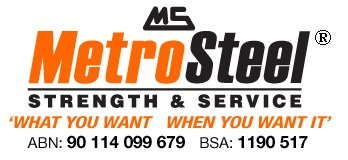One of the things we’re most commonly asked at Metro Steel is the difference between hot and cold rolled steel. It’s a good question because before starting any project it’s important to know which type of steel is most suitable. Different methods of steel manufacture can produce material that is better for certain applications. Hot and cold rolling, in particular, can have a major impact on the overall performance of the steel.
Having an understanding of both methods and the difference between hot and cold rolled steel can help save you time, money, and additional processing. This post aims to explain the difference between hot and cold rolled steel, the advantages and the limitation of each one.
Before we dive in, you should know that these two processes have nothing to do with particular grades of steel. A variety of steel grades can all be produced as hot or cold-rolled steel.
Hot Rolled Steel
This refers to a process whereby the steel is rolled at a temperature that’s higher than its recrystallisation temperature. Typically that’s over 1000˚ F.
Once the steel is heated past this temperature it becomes easier to mould and can be formed and shaped. It also makes it a possibility to produce larger quantities of steel. The steel is then left to cool down at room temperature which returns it to ‘normal’ taking away the worry of stress occurring in the material when work-hardening or quenching.
Once the steel has cooled off, it shrinks non-uniformly which results in less control over the overall size and shape of a finished hot-rolled product.
Hot rolled steel also has a scaly appearance on its surface. If this is a concern, then scales can be removed by techniques such as sandblasting, pickling and grinding.
The properties of hot rolled steel make it most suitable for structural components and other applications where it’s less important for precision and tolerance.
Some examples of this include I-beams, railroad tracks, sheet metal, agricultural equipment and automotive frames.
Cold Rolled steel
The manufacturing process for cold-rolled steel is different to that of hot rolled steel and despite its name refers to steel that has been processed with the pressure of a roller at room temperature rather than at a cold temperature, as you might have thought.
Compared to hot rolled steel, cold-rolled steel is almost 20% stronger through the use of strain hardening. Cold rolled steel refers to coil products and flat-rolled sheet whereas the term ‘cold finishing’ relates to bar products which have usually been cold drawn turned, ground, and polished.
This allows for very precise shapes and since the process is carried out at room temperature, there’s no risk of the steel shrinking as it cools, as happens in the hot rolling process.
Furthermore, its exterior appearance is more desirable when visual appeal and aesthetics are a priority for your project.
That said, cold-rolled steel is limited to producing square, round and flat shapes.
Cold rolled steel is typically used for home appliances, bars, rods, strips, roof and wall systems, aircraft components, and metal furniture.
Which type of rolled steel do you need?
If you need large structural components then hot-rolled steel is your best choice. On the other hand, for smaller parts which need to be more durable and precise, cold-rolled steel is the way to go.
If you have questions about hot and cold rolled steel, and which type is best suited to your project, then get in touch with the experts at Metro Steel. Call us today on 07 3204 1000 or drop by our facility at 109 Kabi Circuit, Deception Bay, QLD 4508.
 Working Hours - Mon – Fri 7:00 AM – 4:00 PM
Working Hours - Mon – Fri 7:00 AM – 4:00 PM Talk to an Expert (07) 3204 1000
Talk to an Expert (07) 3204 1000